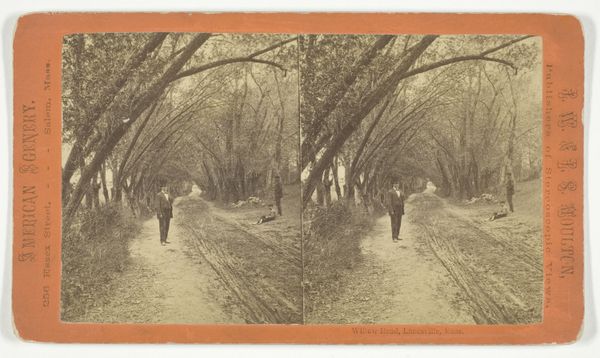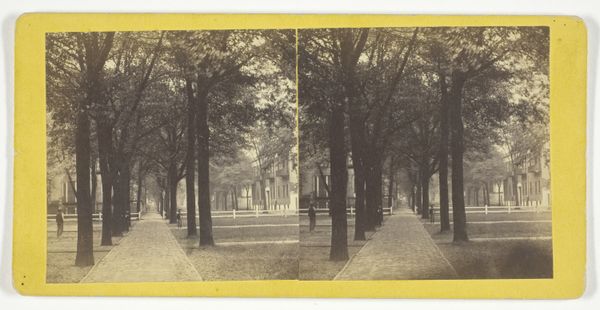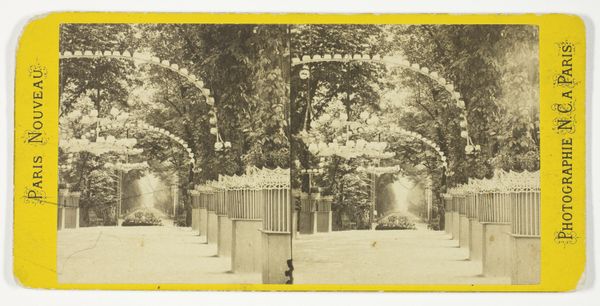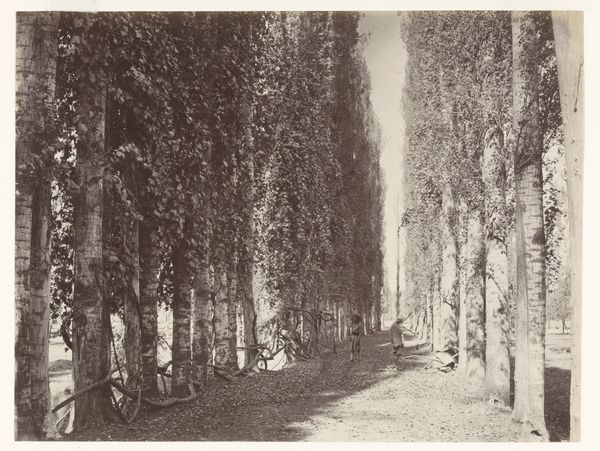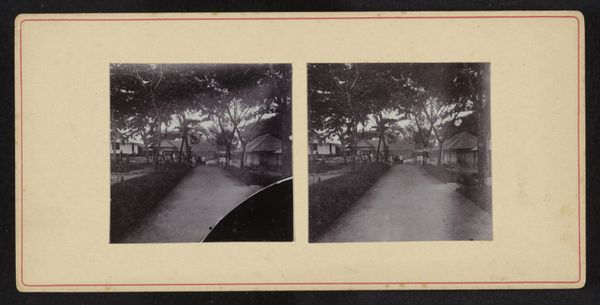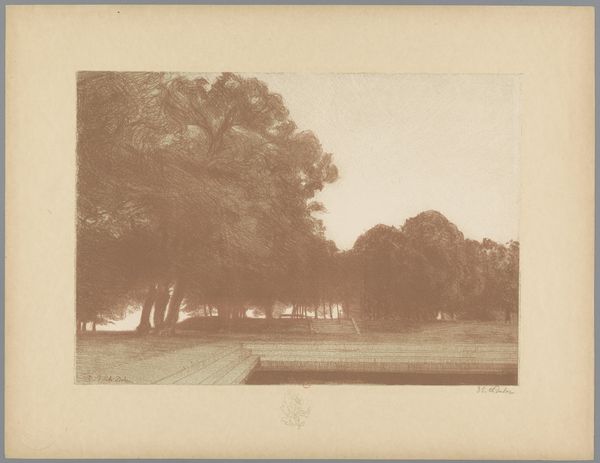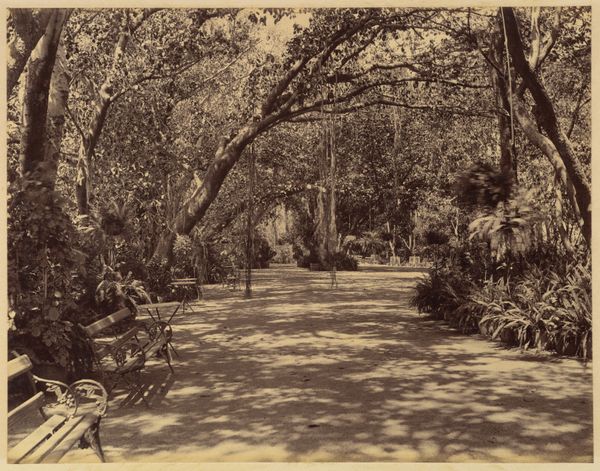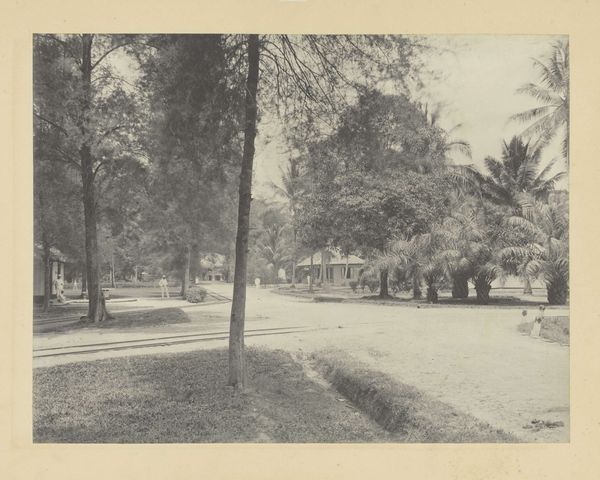
silver, print, photography
#
photo of handprinted image
#
toned paper
#
16_19th-century
#
silver
#
natural tone
# print
#
natural colouring
#
photography
#
coloured pencil
#
men
#
united-states
#
watercolour bleed
#
watercolour illustration
#
natural palette
#
pencil art
#
watercolor
Dimensions: 7.6 × 7.9 cm (left image); 7.6 × 7.6 cm (right image); 8.7 × 17.6 cm (card)
Copyright: Public Domain
This stereograph, “Bonaventure,” by J. N. Wilson, captures a haunting scene: a solitary figure beneath an archway of trees, their branches heavy with Spanish moss. The avenue of trees, common in funerary art, leads the eye, creating a corridor that speaks to the passage of time and the inevitability of fate. The moss, while visually arresting, evokes a sense of decay and impermanence. Consider the melancholic motif of draped fabric in art, symbolizing mourning and loss – a visual echo of the moss hanging here. Such imagery appears in various forms throughout art history. Think of classical depictions of weeping willows near gravesites; a symbolic representation of sorrow and remembrance. These motifs touch upon deep, subconscious fears and anxieties related to mortality. The avenue, like a tunnel into the unknown, is a powerful force, engaging viewers on a primal level. Ultimately, the symbols within this photograph reveal an underlying narrative about memory, time, and our complex relationship with death. These symbols resurface, evolve, and take on new meanings in different historical contexts.
Comments
No comments
Be the first to comment and join the conversation on the ultimate creative platform.
